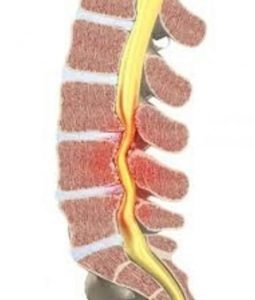Spinal channel tightness is a condition that develops as a result of tightening of the spaces between the vertebra. It may cause a stress on the nerves passing through the spinal cord. A common disease, spinal stenosis is mostly observed in the lower back and neck. While some patients display no symptoms, others may experience pain, numbness, tingling and weakness in their waist and legs as they are walking or standing. These symptoms may worsen over the course of time. Spinal channel tightness is usually caused by the deterioration associated with osteoarthritis.
The most common cause of the spinal channel tightness is old age. As they get older, the human bodies undergo a degenerative process. The tissues of the vertebra may start to thicken, and the bones may stary putting pressure on the neurons. Also, certain conditions such as osteoarthritis or rheumatoid arthritis may cause spinal stenosis as well. However, the list of potential causes of the spinal channel tightness is not limited to this. Concurrently, the congenial vertebra disorders, herniated disks, scoliosis, bone tumors and achondroplasia may also cause spinal channel tightness.

How to Treat Spinal Channel Tightness?
The method of treatment for spinal channel tightness depends on the location and severity of the pain. If a patient has mild symptoms or no symptoms at all, regular check-ups may be enough. Besides, certain methods that can be exercised at home may serve the purpose. may be necessary if regular check-ups and home exercises do not work out. If none of these methods seem to be effective, surgical intervention may be indeed necessary.
Medication
The fundamental purpose of spinal stenosis treatment is to reduce the pain. Thus, painkillers such as ibuprofen, acetaminophen and naproxen, as well as antidepressants, anticonvulsants or opioids may be prescribed.
Physiotherapy
Most people with this condition avoid physical movement to reduce pain. However, such avoidance may in fact cause more pain. With physiotherapy, the patients’ strength, stamina and balance will get better, which may protect vertebra flexibility.
Spinal Stenosis Surgery
In case of ineffectiveness of the abovementioned treatment methods, the surgical intervention option may be discussed. The fundamental purpose of the surgery is to create more space within the spinal cord channel and to relieve the pressure on the patient’s spinal cord or nerve roots.
Among the surgical procedures used in the treatment of spinal stenosis are; laminectomy, laminotomy, minimal invasive surgery, and laminoplasty. As a result of these surgeries, in most cases, the symptoms can be reduced. In the recent years, endoscopic discectomy and decompression surgeries have been offered as another option by various medical centers, including our clinic. In the recent years, our clinic has also started to offer endoscopic discectomy and de-compression surgeries.




